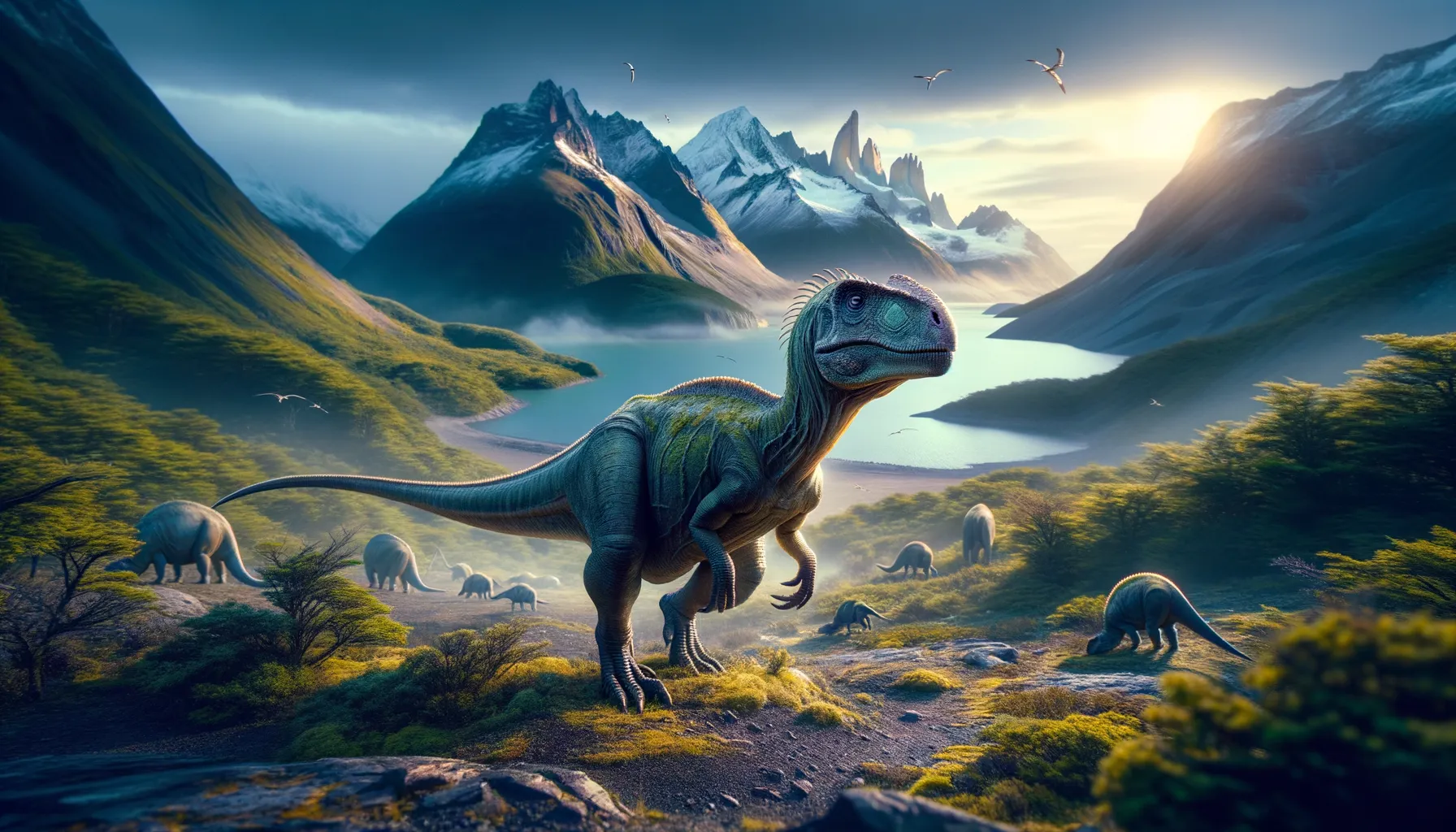
Trinisaura
Graceful grazer of Patagonia's past.
Period
Cretaceous
Length
Roughly 1.5-2 meters long.
Height
Approximately 1 meter tall.
Weight
Around 10-30 kilograms.
Trinisaura was a small, herbivorous dinosaur from the Late Cretaceous period. It is known from fossils found in Patagonia, Argentina, and is part of the ornithopod group. These dinosaurs were likely bipedal, relying on their hind legs for movement. Its discovery has helped provide insights into the diversity of dinosaur species in the Southern Hemisphere during this era.
Diet
Trinisaura was herbivorous, feeding primarily on low-lying vegetation. It likely consumed a variety of plants, including ferns and conifers, using its beak for cropping.
Hunting
As a herbivore, Trinisaura did not engage in hunting. It instead relied on its environment to find plant-based food sources.
Environmental challenges
Trinisaura lived during a time when environmental conditions were changing, which likely presented challenges such as fluctuations in plant availability. The region could have experienced periodic climate shifts affecting its habitat. Predation from larger, carnivorous dinosaurs might also have been a significant threat.
Speed
Likely a slow-moving dinosaur.
Lifespan
Unknown, typical for small ornithopods.
First discovery
First discovered in Argentina in 2013.
Fun Facts
- Trinisaura lived around 70 million years ago during the Late Cretaceous period.
- This dinosaur was named after the scientist who discovered it — the Argentine paleontologist, Rodolfo Aníbal Coria.
- Trinisaura was a small, plant-eating dinosaur, making it a herbivore.
- Fossils of Trinisaura were discovered in Antarctica, offering clues about the continent's ancient climate.
- The discovery of Trinisaura helps scientists understand dinosaur life in isolated environments.
- Its remains were found in rocks that were once part of an ancient forest, indicating a lush habitat.
- Trinisaura's small size suggests it was likely nimble and possibly lived in herds for protection.
Growth and Development
Trinisaura likely followed a growth pattern similar to other small ornithopods, with relatively fast development to reach maturity. Juveniles would have been vulnerable to predators, so rapid growth could have been advantageous. It likely reached full size within a few years.
Habitat
Trinisaura inhabited the Patagonian region, an area that was lush with vegetation during the Cretaceous period. The landscape featured mixed woodland and open areas, which provided ample food resources. Rivers and other water bodies would have been essential for its survival.
Interaction with other species
Trinisaura likely coexisted with a variety of other dinosaur species, including both herbivores and carnivores. It may have relied on group behavior to enhance safety from predators. Its interactions with other herbivores might have included competing for food resources.
Natural lifespan
Trinisaura's natural lifespan remains uncertain but was likely under 20 years.
Reproduction
Trinisaura, like many dinosaurs, likely laid eggs. Clutches could have contained multiple eggs, with parental care potentially provided depending on environmental and predatory pressures. Young Trinisaura would have been precocial, able to move and feed shortly after hatching.
Social behaviour
Trinisaura could have lived in small groups, a behavior that would have enhanced its ability to spot predators and find food. Social interactions within these groups would have included communication through vocalizations or body language.
Fossil locations
Fossils attributed to Trinisaura have been found primarily in Patagonia, Argentina. The discovery in this region adds to the understanding of South American dinosaur biodiversity. Fossils are typically preserved in sedimentary rock layers from the Late Cretaceous period.
